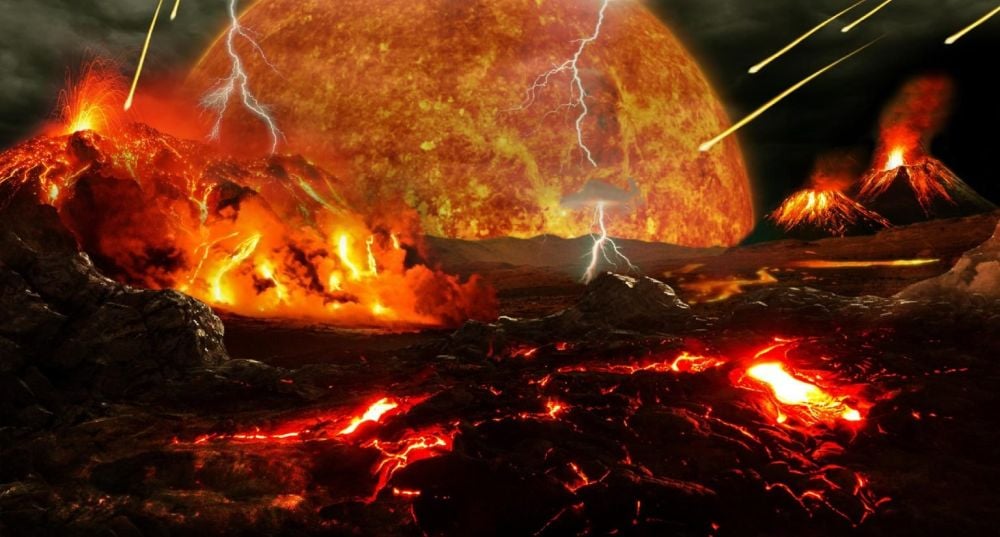Scientists have made a significant breakthrough by uncovering the first evidence of the ancient proto-Earth, dating back approximately 4.5 billion years. This study sheds light on Earth’s early history, particularly the period before the catastrophic impact that led to the formation of the Moon. The research, published in the journal Nature Geoscience, highlights how isotopic analysis of some of the planet’s oldest rocks reveals vital information regarding Earth’s composition prior to the giant impact.
The study draws from isotopic evidence found in ancient rocks located in Greenland, Canada, and South Africa. These locations are known for housing some of the oldest geological materials on Earth. Researchers focused on potassium isotopes, specifically potassium-40 (40K), to understand the characteristics of the proto-Earth. The lead author, Nicole Nie, an Assistant Professor of Earth and Planetary Sciences at MIT, emphasized that the elemental and isotopic characteristics of Earth cannot be entirely reconciled with the composition of known primitive meteorites.
In their analysis, the scientists compared potassium isotopic ratios in ancient and modern rock samples with typical terrestrial samples and meteorites. They aimed to identify the distinct isotopic signatures of the proto-Earth. The research paper is titled “Potassium-40 isotopic evidence for an extant pre-giant-impact component of Earth’s mantle.”
During the Hadean eon, Earth was a molten mass, often referred to as a magma ocean. At this time, a massive protoplanet, known as Theia, collided with Earth, resulting in the formation of the Moon and contributing to significant changes in Earth’s chemistry. This impact introduced materials with different chemical compositions than those found in the existing Earth.
The research began in 2023 when Nie and her team analyzed meteorites from various locations, representing different epochs in the young Solar System. By examining the potassium isotopic signatures in these meteorites, researchers discovered variations that hinted at the materials that contributed to Earth’s formation.
There are three naturally occurring potassium isotopes: potassium-39 (39K), potassium-40 (40K), and potassium-41 (41K). On Earth, potassium-39 comprises 93.26% of the total potassium, while potassium-41 accounts for 6.73%. Potassium-40, however, is present only in trace amounts, making up 0.0117% of the total. The researchers found that the isotopic ratios in the meteorites differed from those in Earth samples, suggesting that certain samples with a similar potassium ratio likely predate the current composition of Earth.
The study indicates that a potassium imbalance in Earth samples could imply they originated from the proto-Earth, prior to the Moon-forming impact. “In that work, we found that different meteorites have different potassium isotopic signatures, and that means potassium can be used as a tracer of Earth’s building blocks,” Nie explained.
The research team also focused on analyzing ancient rock samples from Greenland and Canada, as well as lava samples from Hawaiian volcanoes, which brought materials from deep within the Earth to the surface. Their hope was to find different potassium isotope signatures preserved in these ancient materials.
Laboratory analyses revealed that these ancient samples indeed exhibited distinct potassium isotopic anomalies compared to other terrestrial samples. The results indicated a deficit of 65 parts per million of potassium-40 in the ancient rocks from Greenland and Canada, suggesting a different geochemical history than that of contemporary Earth.
The researchers then posed the question of whether these ancient samples might be remnants of the proto-Earth. The varying potassium-40 concentrations supported the hypothesis that the ancient samples were indeed from the proto-Earth. They argued that the extensive impacts Earth has experienced over its 4 billion year history since the giant impact have altered the chemistry of most of its rock, leading to higher concentrations of potassium-40.
To validate their conclusions, the team simulated how potassium-40 concentrations in meteorites would change due to impacts and geological transformations over time. Their models aligned with the observed data, indicating that the ancient rock samples likely survived the tumultuous history of Earth, providing a glimpse into its primordial state.
“This is maybe the first direct evidence that we’ve preserved proto-Earth materials,” Nie noted. “We see a piece of the very ancient Earth, even before the giant impact. This is amazing because we would expect this very early signature to be slowly erased through Earth’s evolution.”
While the study reveals significant findings, it also indicates that the isotopic signature of the proto-Earth does not perfectly match any known meteorites. This discrepancy suggests that the original materials and meteorites that contributed to Earth’s formation remain undiscovered, implying that there is still much to learn about the planet’s origins.
Nie summarized the implications of the study, stating, “Scientists have been trying to understand Earth’s original chemical composition by combining the compositions of different groups of meteorites. But our study shows that the current meteorite inventory is not complete, and there is much more to learn about where our planet came from.”






































































